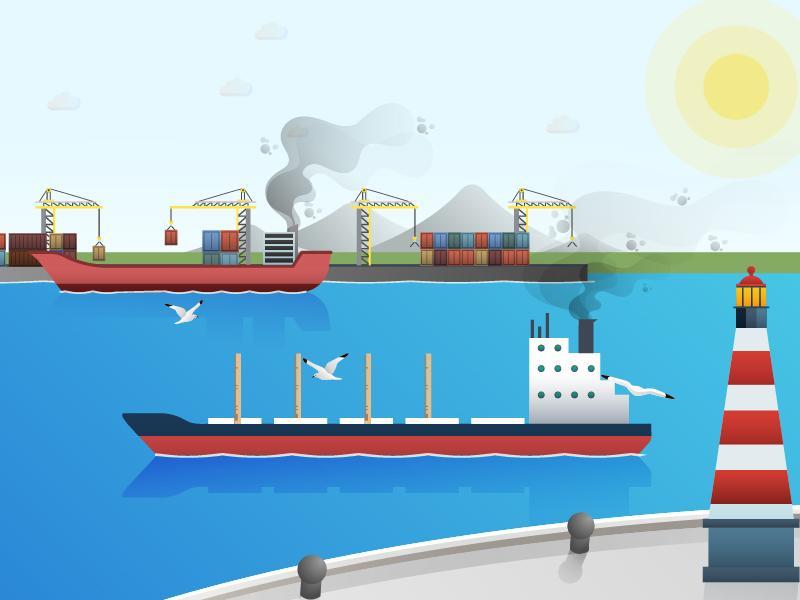
The European Commission has published the first annual report on CO2 emissions from maritime transport. The report analyses the CO2 emissions and energy efficiency information of all the ships over 5,000 gross tonnage, which performed maritime transport activities related to the European Economic Area (EEA) in 2018. Emissions reported by 11,600 ships have added up to over 138 million tonnes of CO2 emissions in that year, representing 3.7% of total EU CO2 emissions according to the European Environment Agency’s greenhouse gas emissions data.
This annual report is based on data from emissions in 2018, reported by companies until September 2019 under the EU Regulation on monitoring, reporting and verification (MRV) of CO2 emissions from maritime transport. The data and report will be published each year, to allow a better understanding of the characteristics, CO2 emissions and energy efficiency of the monitored fleet.
The report shows that around two-thirds of the reported CO2 emissions are related to voyages to or from a port outside the EEA. Voyages inside the EEA represented only 32% of total CO2 emissions, and emissions from ships in EEA ports stood for 6% of total emissions. When comparing CO2 emissions across different ship types, container ships represented the largest share of total emissions, with over 30%.
The technical energy efficiency of the monitored fleet is generally comparable to that of the world fleet (except for small-size container ships). Most of the monitored fleet already meets the global energy efficiency standards applicable over the period 2020-2025. In terms of operational energy efficiency, the vast majority of ships have reduced their speed compared to 2008 (by -15 to -20%). Cruising at lower speeds saves energy and fuel, and can significantly reduce CO2 emissions.
Since 2018, the EU Regulation on monitoring, reporting and verification of CO2 emissions from maritime transport (Regulation (EU) 2015/757) requires shipping companies to monitor their CO2 emissions, fuel consumption and other relevant information during navigation to or from ports in the EEA, when they transport cargo or passengers for commercial reasons.
The 11,600 ships monitored under the EU legislation represent 38% of the world merchant fleet (above 5,000 gross tonnage) and cover a large variety of ships from roll-on/roll-off passenger ships to bulk carriers, tankers and container ships. They are relatively young (11 years old on average), but there are large age disparities between ship types.
CO2 emissions data and energy efficiency information of all individual ships are publicly available on THETIS-MRV, the web-based database developed by the Commission and the European Maritime Safety Agency (EMSA). The transparency of the system and the granularity of the reported data is key to addressing market barriers and stimulating the uptake of energy-efficient behaviours and technologies.
More information:
Details
- Publication date
- 25 May 2020
- Author
- Directorate-General for Climate Action
